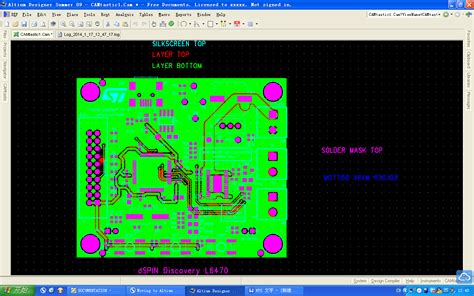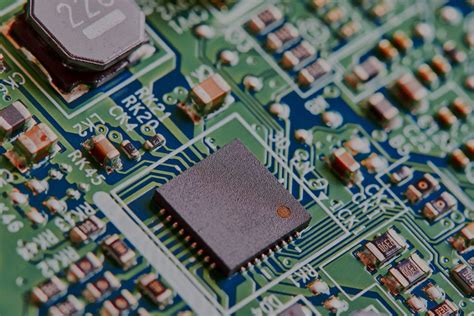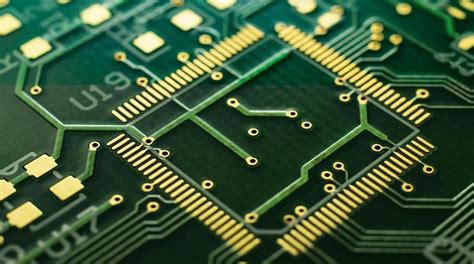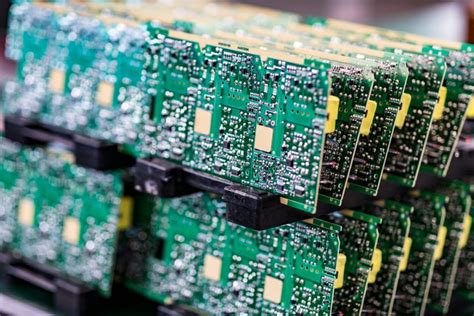Efficient Gerber Fabrication for Streamlined PCB Production

Key Takeaways
In the realm of PCB manufacturing, efficient management of Gerber files is essential to streamline the overall design process. When you focus on the optimized outputs of your Gerber files, you can significantly impact your production timelines and costs. It is critical to employ key techniques that not only enhance the clarity of your designs but also reduce data redundancies that can inflate PCB manufacturing costs. By refining your file formats and eliminating unnecessary layers or components, you improve workflow and efficiency at every stage of your project.
One must consider how PCB manufacturing companies handle component reference filenames as well; having an organized naming convention contributes to improved accuracy throughout the fabrication process. Moreover, by addressing critical factors for effective Gerber layer configuration, you can troubleshoot common issues that arise in Gerber generation, thereby mitigating potential delays in your PCB manufacturing business.
Utilizing the following table can reinforce this point for further clarity:
| Key Aspect | Impact on PCB Manufacturing |
|---|---|
| Efficient file management | Reduces production time |
| Data redundancy elimination | Decreases overall costs |
| Accurate component references | Improves design reliability |
| Effective layer configuration | Enhances design manufacturability |
By incorporating these strategies, you’ll not only streamline your processes but also underscore a commitment to quality and precision within the competitive landscape of PCB fabrication.

Efficient Management of Gerber Files for PCB Design
Efficient management of Gerber files is essential in the realm of PCB manufacturing. By streamlining the way you handle these files, you can significantly minimize both time and costs associated with the PCB manufacturing business. Start by organizing your files in a systematic manner, ensuring you label them clearly to avoid confusion later in the production process. This can also help when collaborating with various PCB manufacturing companies, as clear communication regarding file specifications is crucial for effective outcomes.
One of the best practices is to minimize unnecessary data within your Gerber files. This not only aids in reducing the overall size of your design files but also helps in decreasing potential errors during fabrication, ultimately lowering the PCB manufacturing cost. It’s beneficial to review each layer and eliminate redundant information before sending files out for production.
"Remember, each byte counts; optimizing your design not only saves money but also accelerates timelines."
Implementing these strategies ensures that your workflow remains smooth and efficient. Moreover, attention to detail when managing Gerber files can enhance accuracy, leading to higher-quality circuit boards that meet market demands. Always keep in mind that an organized approach will foster better collaboration with suppliers and serve as an asset to your overall PCB design and production efforts.
Key Techniques for Optimizing Gerber Outputs
When engaging in pcb manufacturing, understanding the intricacies of Gerber file outputs is pivotal for achieving maximum efficiency. One effective approach is ensuring that you generate precise Gerber files that align with the specifications required by pcb manufacturing companies. By optimizing the design files, you not only reduce time spent during the production phase but also help in minimizing the pcb manufacturing cost associated with errors and corrections.
One of the techniques you can employ is to investigate your design rules closely, identifying areas where simplifications can be made without compromising quality. For instance, downsizing unessential layers and optimizing component placements can lead to cleaner output files. Additionally, implementing a systematic file-naming convention for component references enhances clarity and accuracy—allowing for quicker identification during the pcb manufacturing business processes.
Moreover, being proactive in checking for any superfluous data before finalizing your files can significantly streamline operations in your ability to manage and share Gerber outputs. This improved workflow ultimately reduces the likelihood of complications arising during production runs, fostering better collaboration with your chosen pcb manufacturing companies. By prioritizing these techniques, you ensure a smoother transition from design to fabrication, enhancing productivity and satisfaction across all stages of pcb manufacturing.

Reducing Data Redundancies in PCB Fabrication
In the realm of PCB manufacturing, reducing data redundancies is a significant factor that can enhance productivity and efficiency. By ensuring that your Gerber files are free from unnecessary data, you can streamline the entire fabrication process. One effective strategy is to meticulously review and eliminate duplicate items or layers in your designs. This not only diminishes the PCB manufacturing cost, but it also simplifies the workflow, allowing you to focus on more critical elements of your project. Additionally, employing intelligent layer management techniques can minimize confusion and potential errors during the transition from design to PCB manufacturing companies. As you optimize your output files, consider how removing extraneous details can lead to faster production times and improved communication with manufacturers. Ultimately, honing in on these techniques will help propel your PCB manufacturing business to new heights, fostering an environment where efficiency is paramount and costs are kept in check.
Streamlining Workflows in Circuit Board Design
In the intricate world of PCB manufacturing, the efficiency of your workflow can significantly influence the overall timeline and cost associated with your project. To enhance your design process, you should focus on the effective management of Gerber files, which serve as the backbone for communication between designers and PCB manufacturing companies. By adopting streamlined methods for organizing files, you can reduce redundancy and ensure that only necessary data is utilized in your designs. Embracing tools and techniques that optimize your Gerber outputs not only helps in speeding up production but also minimizes errors that may arise during fabrication. For instance, implementing consistent naming conventions for components improves traceability throughout the manufacturing phase. This approach not only contributes to a more organized workflow but also aids in controlling PCB manufacturing costs by reducing rework and delays. Furthermore, understanding the critical factors involved in effective Gerber layer configuration is vital; it enables you to communicate precise requirements to manufacturers, ensuring better alignment with their production capabilities, which is essential for running a successful PCB manufacturing business. Adopting these strategies fosters a seamless integration between design and fabrication, ultimately leading to a more efficient overall process.

Improving Accuracy in Component Reference Filenames
In the realm of pcb manufacturing, the accuracy of your component reference filenames plays a crucial role in ensuring a flawless production process. It’s essential that you implement a consistent naming convention for components, which not only simplifies the communication with pcb manufacturing companies but also aids in avoiding potential errors during assembly. By standardizing filenames, you can enhance clarity—making it easier for engineers and production teams to track which components correspond to different aspects of your design. Additionally, clarity in your filenames can contribute to minimizing the pcb manufacturing cost, as it streamlines communication and reduces the risk of recalls or re-manufacturing due to misunderstandings. You might consider including relevant details such as component values, types, or mounting styles directly in the filename. This method ensures that any team member can easily identify a part without confusion. In turn, this practice fosters a more efficient environment where workflows are smooth, and productivity is increased. The adoption of accurate and well-structured component reference filenames can significantly impact your overall pcb manufacturing business, helping you deliver high-quality products that meet your clients’ specifications on time.

Critical Factors for Effective Gerber Layer Configuration
When engaging with pcb manufacturing, understanding the intricate aspects of Gerber layer configuration is crucial for achieving optimal results. One of the foundational elements to consider is ensuring that you are familiar with the specific requirements of pcb manufacturing companies you may collaborate with. Different companies might prefer variations in file formats or layer arrangements, so aligning these specifications with industry standards can significantly impact your workflow.
Additionally, reducing unnecessary complexity in the design can help minimize pcb manufacturing costs while maintaining quality. This involves being meticulous in how layers are configured and labeled, as clarity in your designs aids manufacturers in executing your vision accurately and efficiently. Another critical factor is organizing component references effectively; using clear and consistently formatted filenames not only enhances communication but also leads to better tracking throughout the pcb manufacturing business cycle.
Incorporating these considerations helps streamline your design process, ultimately benefiting both you and your partners involved in fabrication. By focusing on optimizing your Gerber layers, you can enhance accuracy and reduce errors during production, leading to a more efficient output overall.
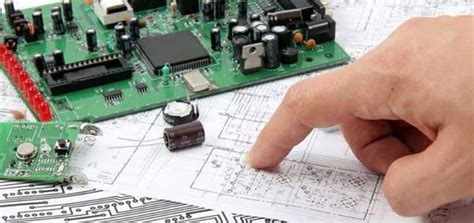
Troubleshooting Common Issues in Gerber Generation
In the world of PCB manufacturing, generating accurate Gerber files is crucial for the success of your production process. However, various issues may arise that can hinder the efficiency of your design and result in potential setbacks. One common problem is the misalignment of layers, which can create discrepancies during PCB manufacturing and lead to increased costs. To minimize these challenges, you should ensure that each layer follows a standardized configuration and check for any discrepancies before finalizing your Gerber files. Another frequent issue relates to unnecessary data included in your files. Redundant information can inflate pcb manufacturing costs and complicate the workflow with pcb manufacturing companies. To resolve this, scrutinize your designs for extraneous elements that do not contribute to the final product, streamlining your files accordingly. Lastly, be vigilant about naming conventions in component references; inconsistencies here can create confusion during subsequent processes, affecting both quality and speed in your PCB manufacturing business. By addressing these common issues proactively, you can enhance your overall efficiency in PCB production and ensure smoother operations moving forward.
Conclusion
In summarizing the journey through efficient Gerber fabrication techniques critical to refined PCB manufacturing, you now possess a clearer pathway to enhance your design process. By implementing strategic optimizations tailored for PCB manufacturing companies, you can significantly lower the PCB manufacturing cost while improving production speed. The elimination of unnecessary data not only smooths transitions between design phases but also fosters a more streamlined workflow. Moreover, understanding how to configure reference filenames effectively underscores the importance of clarity in your projects, directly contributing to productivity gains in your PCB manufacturing business. As you refine your approach, remember that each improvement contributes cumulatively, setting a strong foundation for future innovations in the field of circuit board creation.
FAQs
What is Gerber fabrication in the context of PCB manufacturing?
Gerber fabrication refers to the process of creating Gerber files, which are crucial for PCB manufacturing. These files contain all the necessary information for PCB manufacturing companies to produce circuit boards accurately.
How can I optimize Gerber files for cost-effective PCB manufacturing?
To optimize Gerber files, ensure they are free of unnecessary data and redundancies. This not only streamlines the PCB manufacturing process but also helps in reducing overall PCB manufacturing cost.
What common issues arise during Gerber generation and how can they be addressed?
Common issues include file format discrepancies and misconfigured layers, which can lead to errors in production. Regularly checking for accuracy in component reference filenames and maintaining effective Gerber layer configuration can mitigate these problems.
How do I choose a reliable PCB manufacturing company?
When selecting a PCB manufacturing business, consider their experience, production capabilities, and customer reviews to ensure they meet your specific needs.

